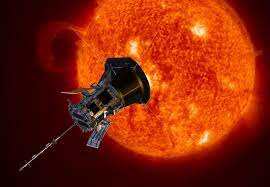Parker Solar Probe:

Scientists using data from NASA’s Parker Solar Probe have assembled the most complete picture yet of the inner structure and behavior of the large cloud of space dust, known as the zodiacal cloud, that swirls throughout the solar system.
They found three dust populations in the cloud:
- Most of the grains are being slowly pulled in toward the Sun (alpha-meteoroids).
- The second population is generated as grains in the swirling cloud collide, creating fragments so small that they are pushed out of the solar system in all directions by pressure from sunlight (beta-meteoroids).
- A third group, probably created when a “tube” of cometary debris collides with grains from the first two populations, is scattered out in a distinctive wedge shape.
- The sources of zodiacal clouds/interplanetary dust particles (IDPs) include at least: asteroid collisions, cometary activity and collisions in the inner Solar System, Kuiper belt collisions, and interstellar medium grains.
- It scatters sunlight in a way that can be seen with the naked eye, but only on very dark, clear nights, as moonlight or light from cities both easily outshine it.
- Thickest near the sun and thinnest near the edges of the solar system, the zodiacal cloud looks smooth to the naked eye, but infrared wavelengths reveal bright streaks and ribbons that can be traced back to their sources: comets and asteroids.
About the mission:
- NASA’s historic Parker Solar Probe mission will revolutionize our understanding of the sun, where changing conditions can propagate out into the solar system, affecting Earth and other worlds.
- Parker Solar Probe will travel through the sun’s atmosphere, closer to the surface than any spacecraft before it, facing brutal heat and radiation conditions — and ultimately providing humanity with the closest-ever observations of a star.
- In order to unlock the mysteries of the sun’s atmosphere, Parker Solar Probe will use Venus’ gravity during seven flybys over nearly seven years to gradually bring its orbit closer to the sun.
- The spacecraft will fly through the sun’s atmosphere as close as 3.9 million miles to our star’s surface, well within the orbit of Mercury and more than seven times closer than any spacecraft has come before.
Parker Solar Probe has three detailed science objectives:
- Trace the flow of energy that heats and accelerates the solar corona and solar wind.
- Determine the structure and dynamics of the plasma and magnetic fields at the sources of the solar wind.
- Explore mechanisms that accelerate and transport energetic particles.




